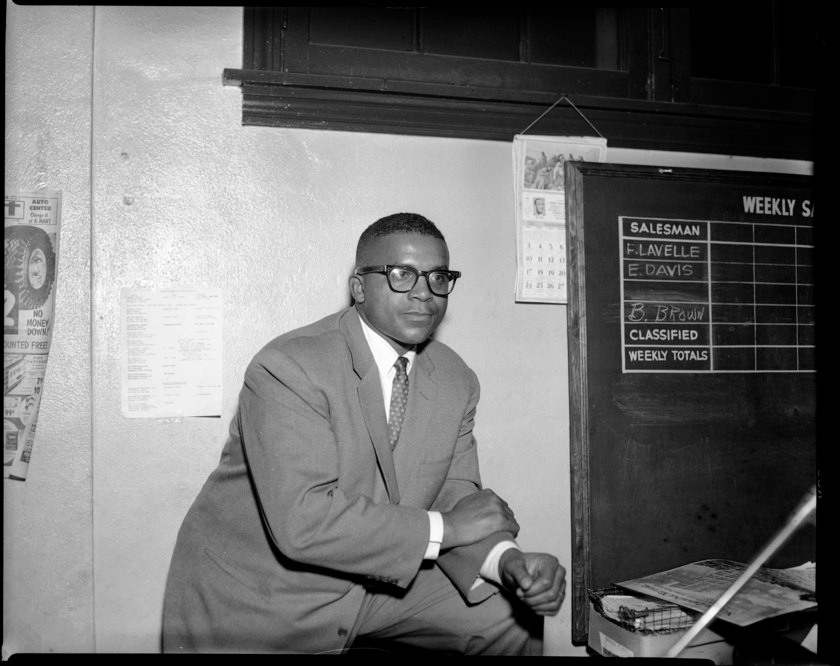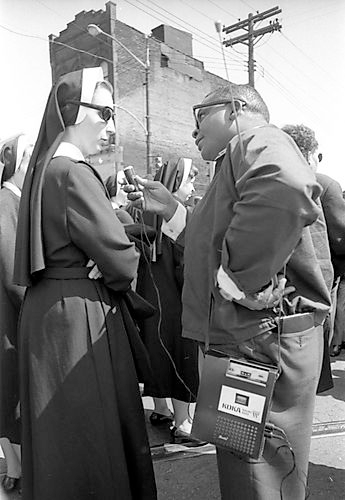 George Barbour knew where he needed to be, but his bosses were wary.
George Barbour knew where he needed to be, but his bosses were wary.
Alabama in March 1965 was a volatile and dangerous place, particularly for African Americans. Many were rising up to fight against voting discrimination and the state’s other racist policies. Civil rights leaders, led by Martin Luther King Jr., had planned a 54-mile protest march from Selma to the state capital of Montgomery, knowing that they might confront deadly violence.
Barbour (A&S ’51), a news reporter for Pittsburgh’s KDKA Radio, wanted to cover what was happening. But wouldn’t it be too dangerous to send him, the station’s first Black full-time reporter, to where segregationists had already attacked and killed protesters?
 He couldn’t be swayed. Ensuring that the events in Alabama received proper news coverage trumped any concerns the husband and father had for his personal safety.
He couldn’t be swayed. Ensuring that the events in Alabama received proper news coverage trumped any concerns the husband and father had for his personal safety.
Barbour would become the only African American radio reporter to walk the route of the now historic Selma to Montgomery March. His experience was recently chronicled in the documentary “George Barbour: Journalist,” by filmmaker Ken Love (A&S ’71).
Loaded down with a heavy backpack of radio and tape-recording equipment, he marched with a crowd that would grow to about 25,000 people. His coverage included recording King and the one-day U.S. Congressman John Lewis, among others. There were harrowing moments, too: At one point, he was chased down by an angry mob.
“During the 1965 civil rights war, Negroes, newsmen and Northerners [were all] hated,” he said in his KDKA report, noting that he was all three.
Throughout his long career in journalism, Barbour would cover many other important stories, as Love’s documentary shows. During his time on KDKA Radio and as a reporter for the Pittsburgh Courier, Barbour won awards for his investigative reports on the African American experience. But covering the influential civil rights march—which played a critical role in the passage of the Voting Rights Act of 1965—remains a highlight of his career.
In 2020, the U.S. Department of the Interior’s National Park Service sent the journalist a letter recognizing his trailblazing role marching along what is now the Selma to Montgomery National Historic Trail, which commemorates the people, places and events attached to Selma and the voting rights movement.
“Dad told us stories of everyday people he met on the march who were determined to do their part in bringing about social change,” recalls his daughter Jacalyn Barbour.
By investigating, reporting and having the courage to enter the fray, Barbour played his part, too.
Click here to view a discussion of the documentary “George Barbour: Journalist,” presented by the University of Pittsburgh.
This story is part of Pitt Magazine’s special Summer ’21 digital issue.




